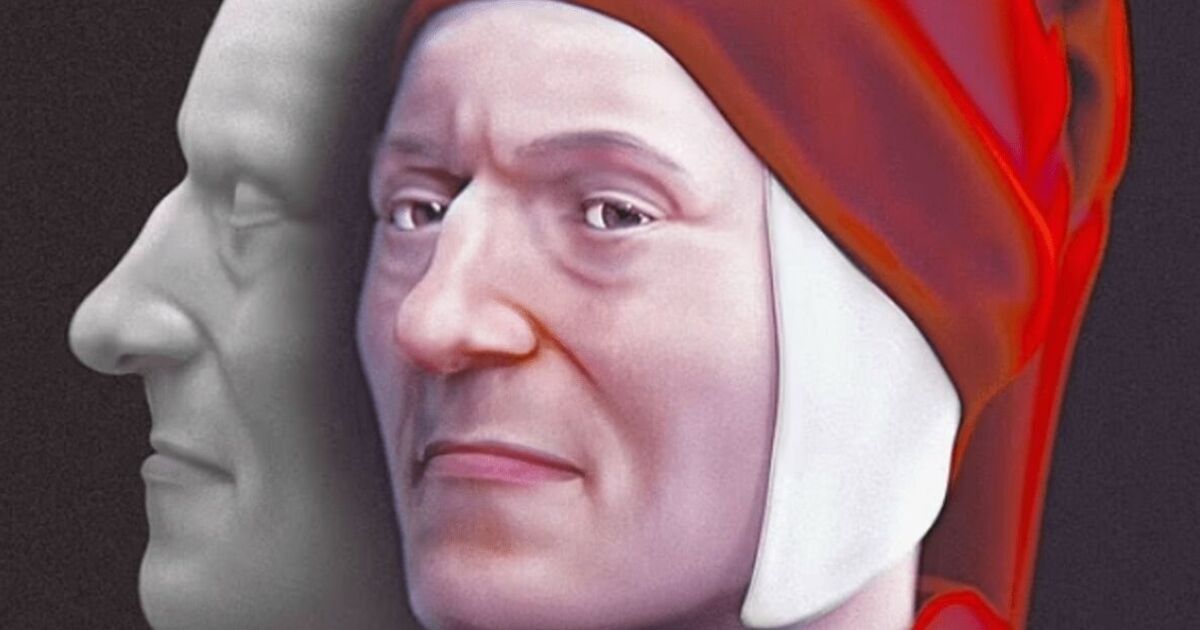Scientists have created an image of how Dante, the man who created our vision of hell more than 702 years ago, would have looked, using his skull.
Poet and writer Dante Alighieri, who is also hailed as father of the Italian language, created the classic description of hell, that is now seen as standard, in his work the Divine Comedy first published in 1321.
It described a journey into heaven, hell, and purgatory and an inferno of nine circles where the worst of humanity were condemned to the deepest parts with sinners receiving ironic punishments for whatever they did.
Although his descriptions of hell, including the journey of a fictional version of himself through it guided by ancient Roman poet Virgil, are iconic, what he looked like has remained a mystery ever since.
He was exiled from his native Florence in 1302 amid allegations of for corruption, financial wrongdoing and opposing papal power.
Paintings of the poet and author were done long after his death in September in Ravenna the same year aged 56.
But, now a team of scientists has solved the mystery of what he looked like by using his skull to digitally recreate his face.
And, he does not look like the man depicted in the original paintings.
Cicero Moraes, a graphics expert, who led the team, said: “‘Most are based on the information contained in the biography of Dante composed by the writer Boccaccio.
“‘Namely, that he was an individual of medium height, somewhat stooped, with a long face, an aquiline nose and eyes that were more large than small.
“‘However, Boccaccio did not know Dante personally and collected reports from people close to the poet and who lived with him.
“All approximations seem to follow Boccaccio’s descriptions, but we seek to do strictly what the bones indicate.”
The study first looked at a 1921 analysis of his bones and then a 2007 article about his face.
Mr Moraes said: “We then proceeded with the facial approximation. This consists of making a series of projections based on statistical data extracted from tomography and ultrasound analyses, and crossing them with the anatomical deformation.”
It found that he had a larger-than-average skull.
He added: “Two sets of images were generated, one with an objective approach, in grayscale, without hair and with eyes closed.
“And another in colour and with subjective elements, such as the colour of the eyes, skin and clothing, according to the best-known images. It shows a brilliant man, but embittered by exile.”
Mr Cicero and co-author, Thiago Beaini, of the Federal University of Uberlândia, published the study in 3D computer graphics journal OrtogOnLineMag







Leave a comment